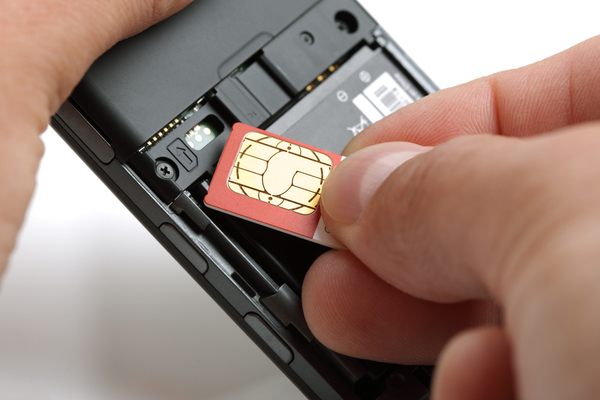According to a report by The Verge, the Department of Justice may have just done more to eliminate those little plastic SIM cards you have to use to get your phone to work on a wireless carrier than all of the efforts of Big Tech over the past four years. That’s because it is requiring Dish and T-Mobile to support eSIM technology as a condition of its merger approval.
What may seem like a wonky side detail or extra technical requirement in a blockbuster merger approval announcement could end up changing not just how your phone gets online, but also eventually the way phones are built. It’s not going to happen overnight — the process will probably take years — but this small proviso in the merger approval could affect much more than who can sell wireless service in America.
Electronic SIM (eSIM) is the technology that allows wireless devices to get activated on a network through software. In theory, it makes it much easier for consumers to switch networks because they don’t have to acquire a physical thing (the SIM card) from the network they want to switch to. They can just tap a few buttons in an app. In practice, it hasn’t quite been that easy since US carriers have dragged their feet in rolling out full support for eSIM.
The big thing the Justice Department is requiring is that “The New T-Mobile” sell a bunch of assets to Dish so that it has the tools it needs to become the fourth wireless carrier. But in a press conference announcing the approval, the US government also said it’s requiring both The New T-Mobile and Dish to support eSIM technology, which allows your phone to register itself with the carrier using only its internal chips, not a little plastic shim you have to insert into your phone. Here’s how the DOJ put it:
The remedy also facilitates consumers’ ability to easily switch between wireless providers by requiring the new T-Mobile and the new Dish service to support eSIM, electronic SIM, technology. This requirement will make it easier for Dish to attract new subscribers, help extend the competition in this market, and will provide a platform for new innovative options.
Sadly in the United States, eSIM has not been widely adopted in mobile wireless like it is in Europe and others. And that’s an area separate of this merger we have looked to. This will revolutionize the use eSIMs in hopefully all carriers, because once consumers have it, they’ll benefit from it. This seems like a small detail, especially since the major US carriers only started officially supporting eSIM technology on new iPhones last year. But the important thing to note is that the support is mandatory.
In theory, that could mean that both companies will eventually require that phones on their networks support eSIM in order to stay in compliance with the merger approval agreement. That would mean that anybody who wants to get their phones on those networks — and that will be pretty much everybody — will need to build in support for eSIM. If eSIM becomes the standard on T-Mobile and Dish, the DOJ is hoping consumer pressure will bring it to all carriers and also make it easier to use to easily switch between them.
You may have noticed a bunch of “in theory” and “ifs” in the preceding paragraphs. That’s because we don’t yet know the full extent of the DOJ’s eSIM requirement. It is probably unlikely that it will force these new wireless carriers to only provision phones that support eSIM. It’s more likely that it’s requiring that if a phone has it, these companies have to support it.
But even if we’re looking at that slightly weaker requirement, it’s still a very big deal. Lots of phone makers are very eager to get rid of the physical SIM card. It is one of the most aggravating parts of designing a phone because they need some kind of slot or drawer to put the SIM in, which takes up space and also is a point of ingress for water or dirt. Getting rid of the physical SIM means companies can design smaller, thinner, and more durable phones.
Again, don’t get your hopes up that any of this will happen immediately. The Justice Department is hoping that market dynamics put some pressure on these phone carriers to adopt eSIM, and market dynamics take a very long time. Even if it happens, there’s no guarantee that switching your eSIM-enabled phone will be easy. The DOJ already has an open investigation into how the US carriers are trying to undermine eSIM technology by adding locks and barriers to its use, so the road ahead for eSIM adoption is still long and bumpy. But this news at least gives us a map for it.
—
Photo Credit: Brian A Jackson / Shutterstock.com
